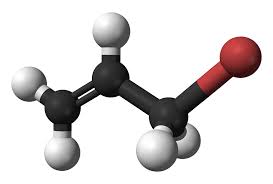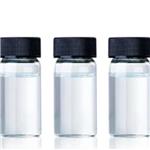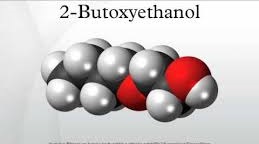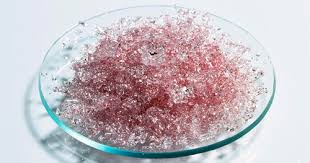Application of Allyl bromide
Allyl bromide is used as an alkylating agent in the synthesis of pharmaceuticals, polymers, adhesives, perfumes, biochemicals and other allylic compounds.
It is used as precursor for the preparation of allyliczinc bromide by reacting it with zinc. It is also used in the preparation of allylethers like allyl decyl ether, allyl benzyl ether and allyl geranyl ether. It is also used in the preparation of R enantiomer of allyl phenyl carbinol (APC) such as 1-phenyl-3-butene, which is a valuable intermediate for drugs and agro-chemicals.

Application of Allyl bromide
Halogenoalkanes, also known as haloalkanes or alkyl halides, are organic compounds in which one or more hydrogen atoms in an alkane have been replaced by halogen atoms, fluorine, chlorine, bromine or iodine. In carbon-halogen bond, halogens have significantly greater electronegativities than carbon except iodine. In result, this functional group is polarized so that the carbon is electrophilic and the halogen is nucleophilic.
Halogenoalkanes are can be classified depending on the halogen atom position on the chain of carbon atoms. The carbon which is attached with the halogen atom is linked up with only one other alkyl group in primary halogenoalkanes, whereas directly linked up with two and three other alkyl groups in secondary halogenoalkanes and tertiary halogenoalkanes respectively.
In some case, primary halogenoalkanes are counted even though there are no alkyl groups attached to the carbon with the halogen on it. Three characteristics provide important influences on the chemical behavior of halogenoalkanes, these are electronegativity, covalent bond strength and the relative stability of the corresponding halide anions. Fluoroalkanes have the strongest of the carbon-halogen covalent bonds so that they are unreactive. This is stronger single bond than a carbon-carbon bond. The carbon-chlorine covalent bond is slightly weaker than a carbon-carbon bond, and the bonds to the other halogens are weaker. The stability may be estimated from the relative acidities of the H-X acids.
All the hydrohalic acids are very strong, but with small differences in the direction HCl < HBr < HI, with the exception of HF. Halogenoarenes, also called haloarene, or aryl Halide, are an organic compound in which one or more hydrogen atoms in an aromatic ring have been replaced by halogen atoms. The Haloarenes exhibit many differences compare to haloalkanes in the method of preparation and their chemical and phisical properties.
Haloalkanes are used in as refrigerants, solvents, blowing agents, aerosol propellants, fire extinguishing media , and in semiconductor device fabrication. One of big consumption of halogenoalkanes (properly speaking, halogenoalkenes) is as a raw material to prepare plastics such as PVC [poly(chloroethene)] from chloroethene and PTFE [poly(tetrafluoroethene)] from tetrafluoroethene. Halogenoalkanes and halogenoarenes react with lots of compounds resulting in a wide range of different target substances. They are useful intermediates in making other organic compounds.
Related articles And Qustion
Lastest Price from Allyl bromide manufacturers

US $10.00/KG2025-04-21
- CAS:
- 106-95-6
- Min. Order:
- 1KG
- Purity:
- 99%
- Supply Ability:
- 10 mt

US $20.00/kg2025-04-18
- CAS:
- 106-95-6
- Min. Order:
- 1kg
- Purity:
- 99.99%
- Supply Ability:
- 10000


